
Key Points
- Equal Weight S&P 500 Lags the Cap Weight Index
- NYSE Breadth Improves but We Can’t Call It Healthy
- NYSE Lows Fall, Bulls Don’t Want to See a Rebound
- S&P 500 Metrics Win the Most Improved Player Award this Week
- Small Cap Metrics Lift, We Are Looking for More
Chart in Focus
Markets have rebounded, and breadth metrics have improved, but we are not ready to sound the all-clear on the horrible breadth dynamics that we have witnessed this year. Those dynamics are made very clear in the S&P 500 Equal Weight Index vs. the S&P 500 chart, which has been trending to the downside since May. The ratio is below the declining 50 and 200-day moving averages, and the 14-day RSI is in a bearish regime. The biggest stocks in the index continue to do much of the heavy lifting.
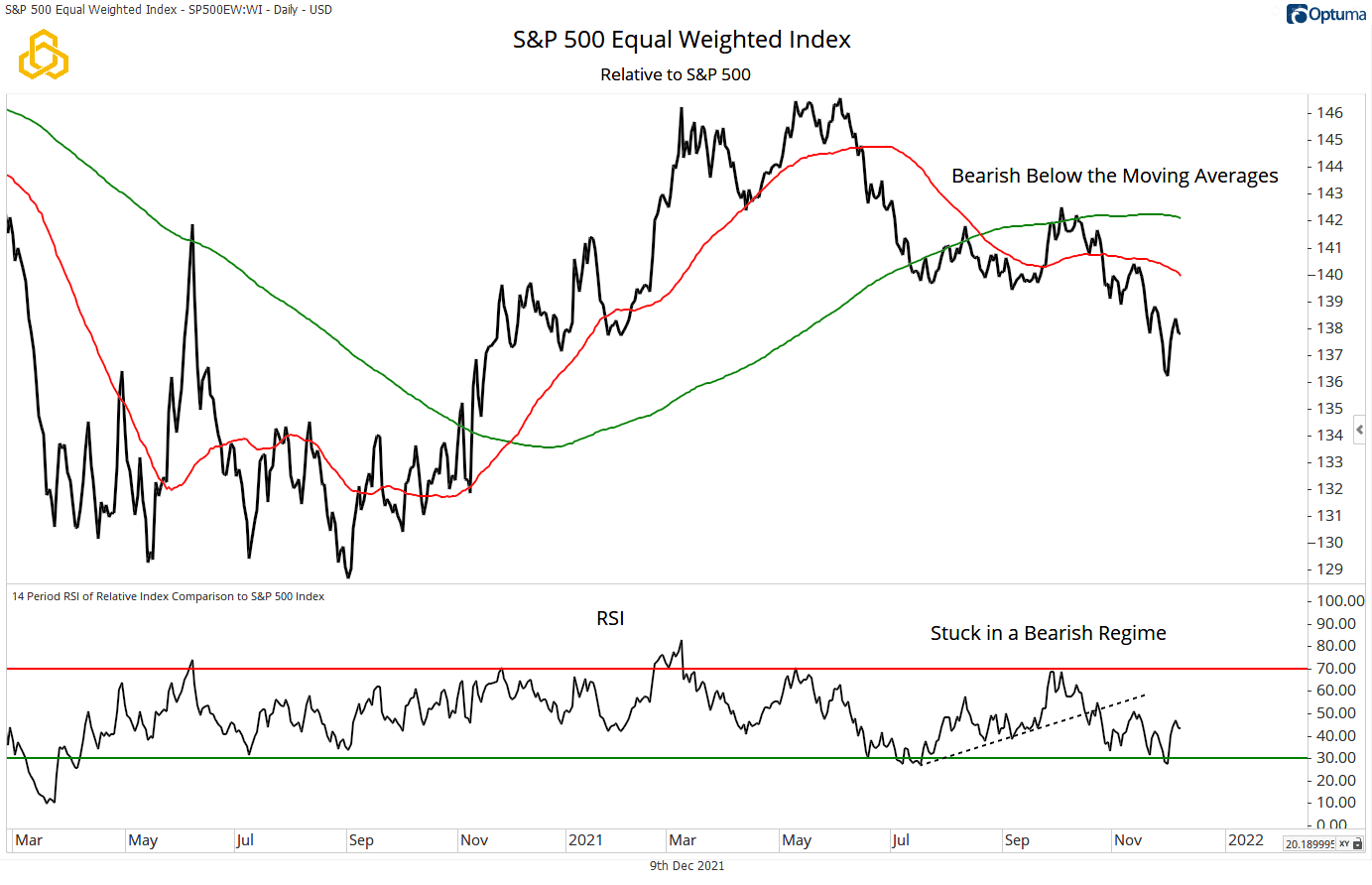
NYSE Breadth
The NYSE’s Advance/Decline Line has rebounded from support at the summer lows but remains below the 50-day moving average. The S&P 500 is a stone’s throw from record levels, setting the stage for a potential divergence should the index trade to new highs while the A/D Line does not.
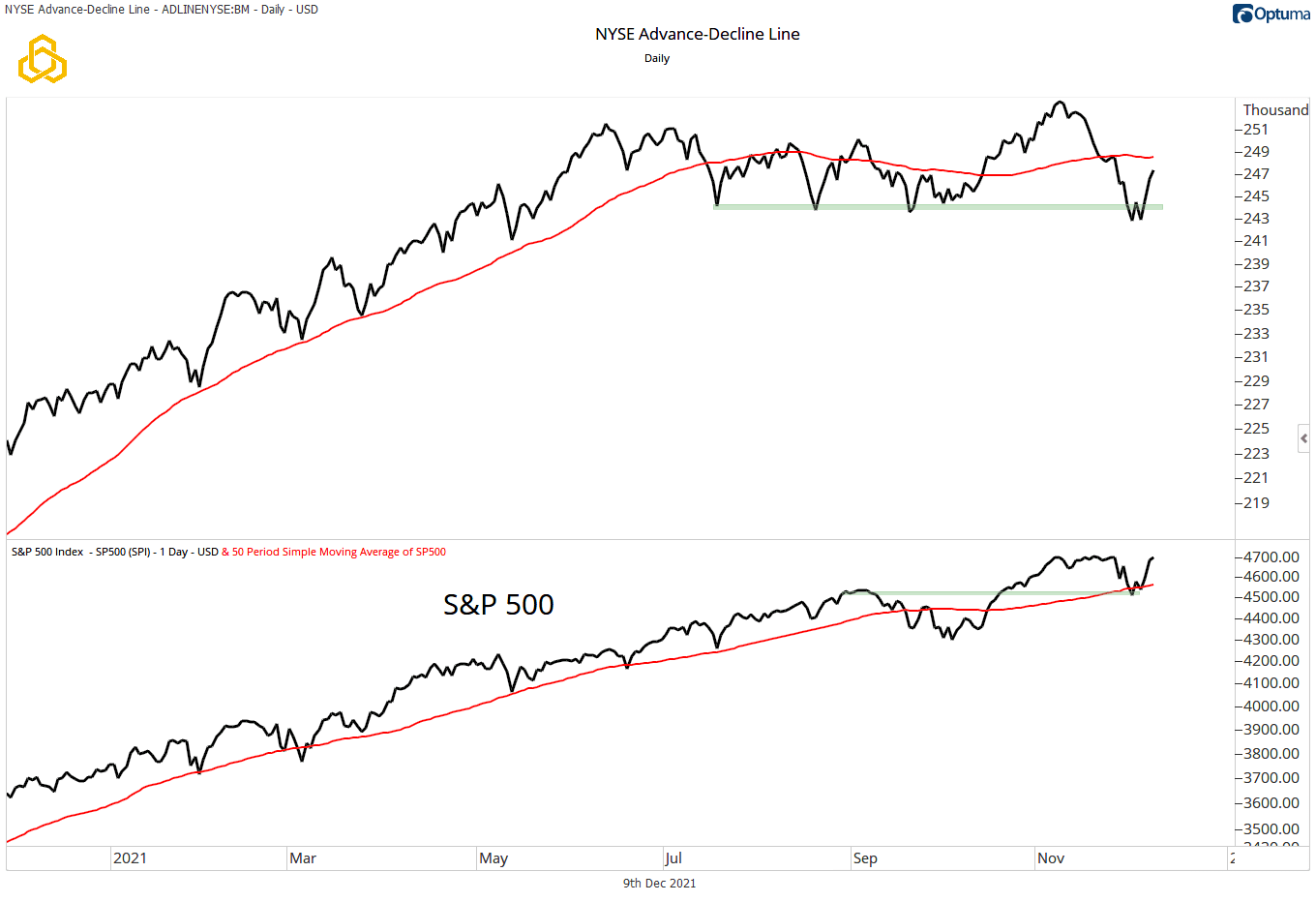
The NYSE’s Advance-Declining Volume Line has also rebounded from the summer lows and remains below the 50-day moving average. A similar dynamic as the A/D line is in play here, where there is potential for a divergence should the index trade to a new high in the days ahead.
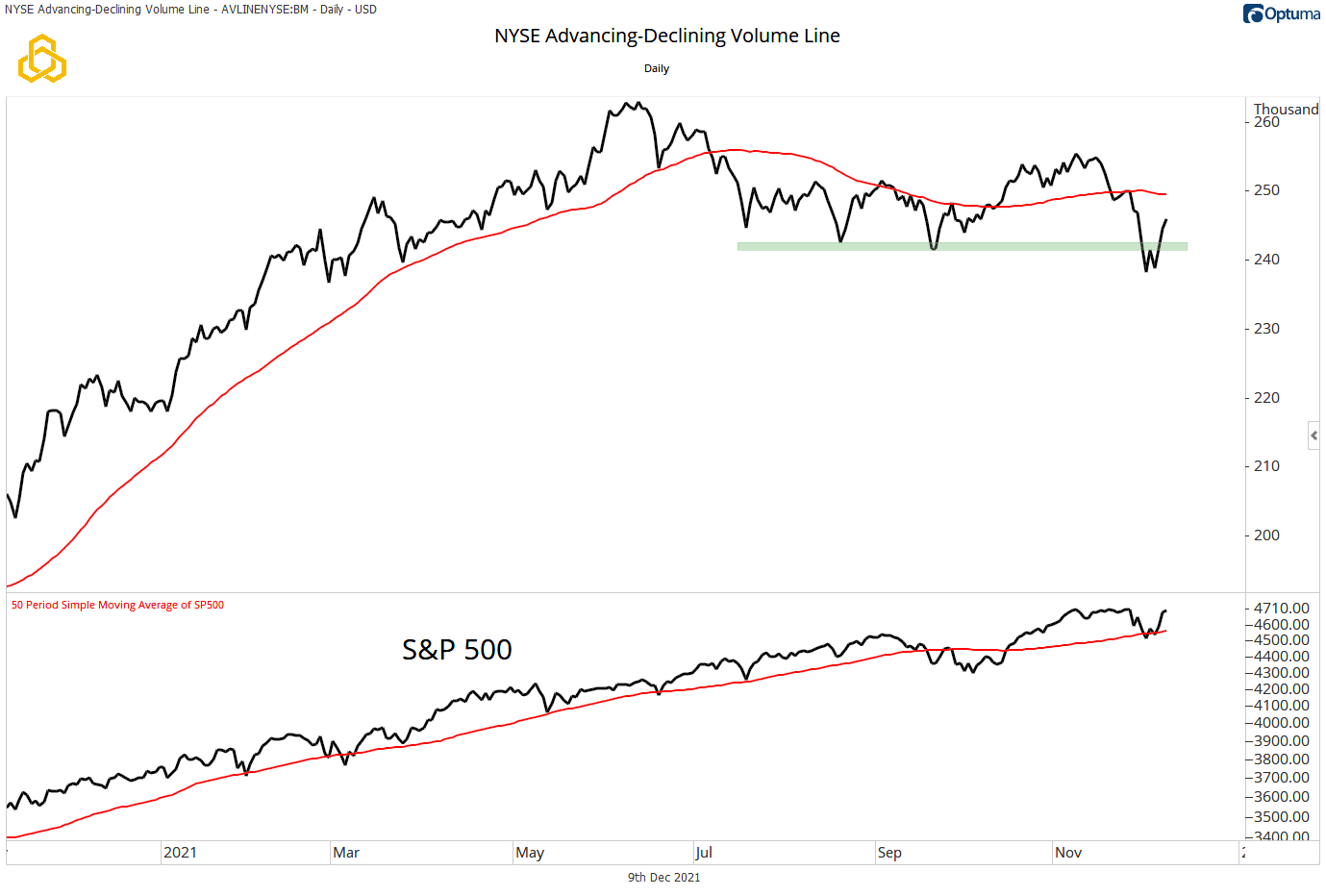
The 5-day moving averages of issues on the NYSE making new 52-week and six-month lows have declined dramatically this week as the indexes have rallied. This is clearly a step in the right direction for equity bulls, but the metrics remain elevated in the near term. The ideal situation would see the moving averages move below their summer/fall peaks.
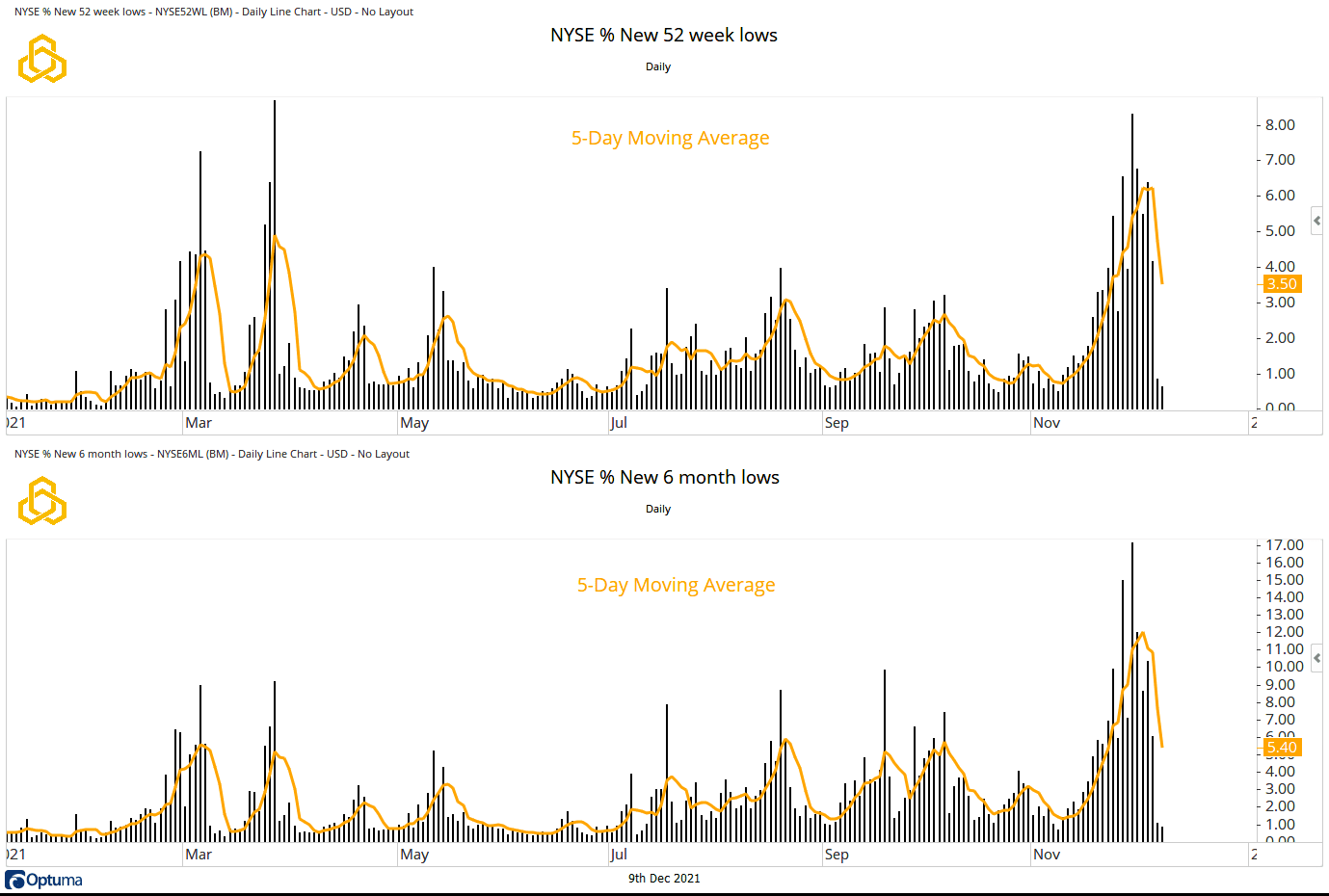
The five-day moving averages of stocks on the NYSE making new six-month and 52-week highs saw a small uptick over the past week but still has a fair amount of work to repair the damage that has slowly been done since these metrics peaked in the March—May timeframe.
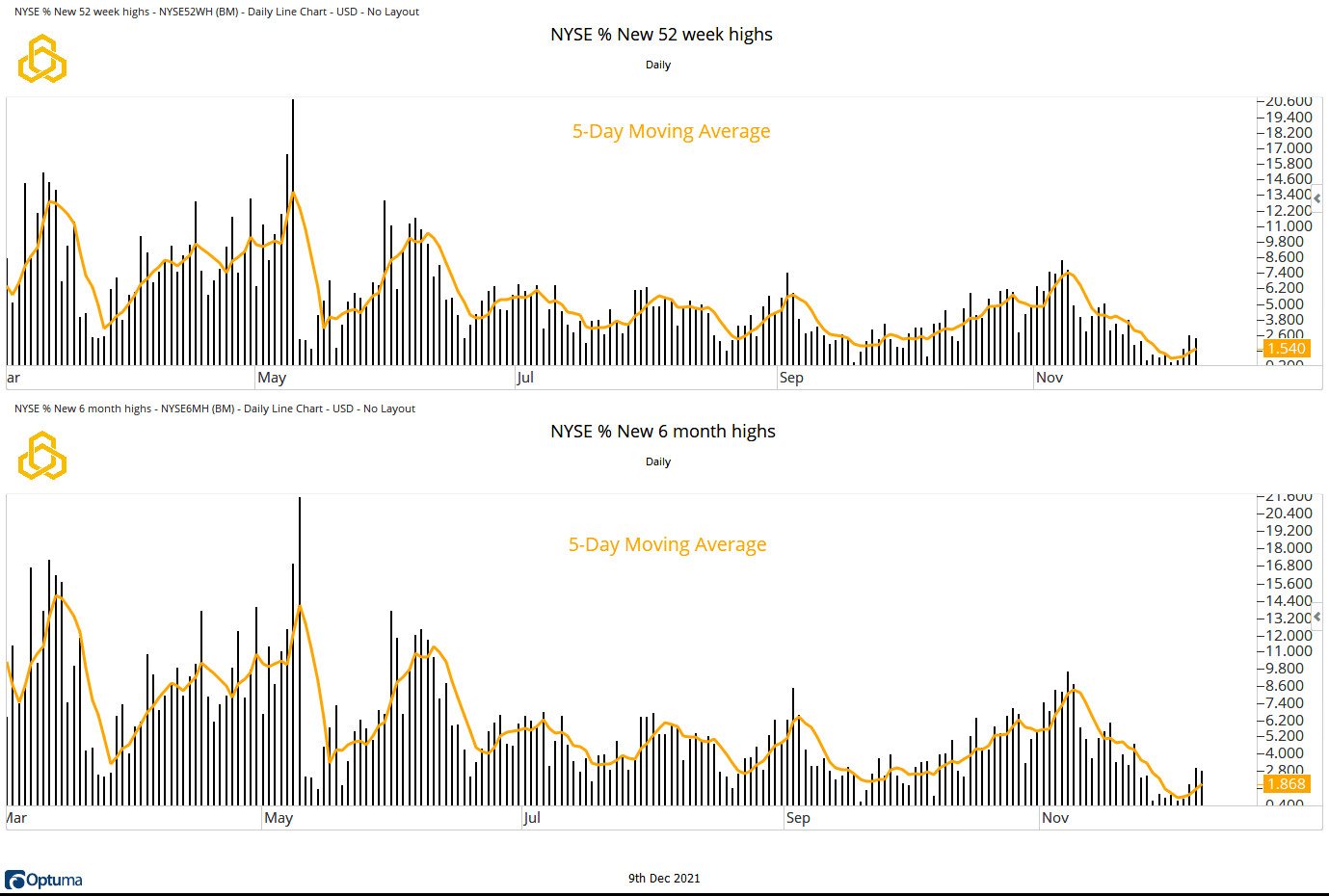
The percentage of stocks on the NYSE trading above their respective 200-day moving averages moved to 38% this week from 29%, a nice rebound over the past week. However, this indicator is still in a very clear downtrend, which will remain in place until the 50% level is breached in a meaningful way. This sets the stage for another divergence should the S&P 500 trade to a new high above its 200-day moving average.
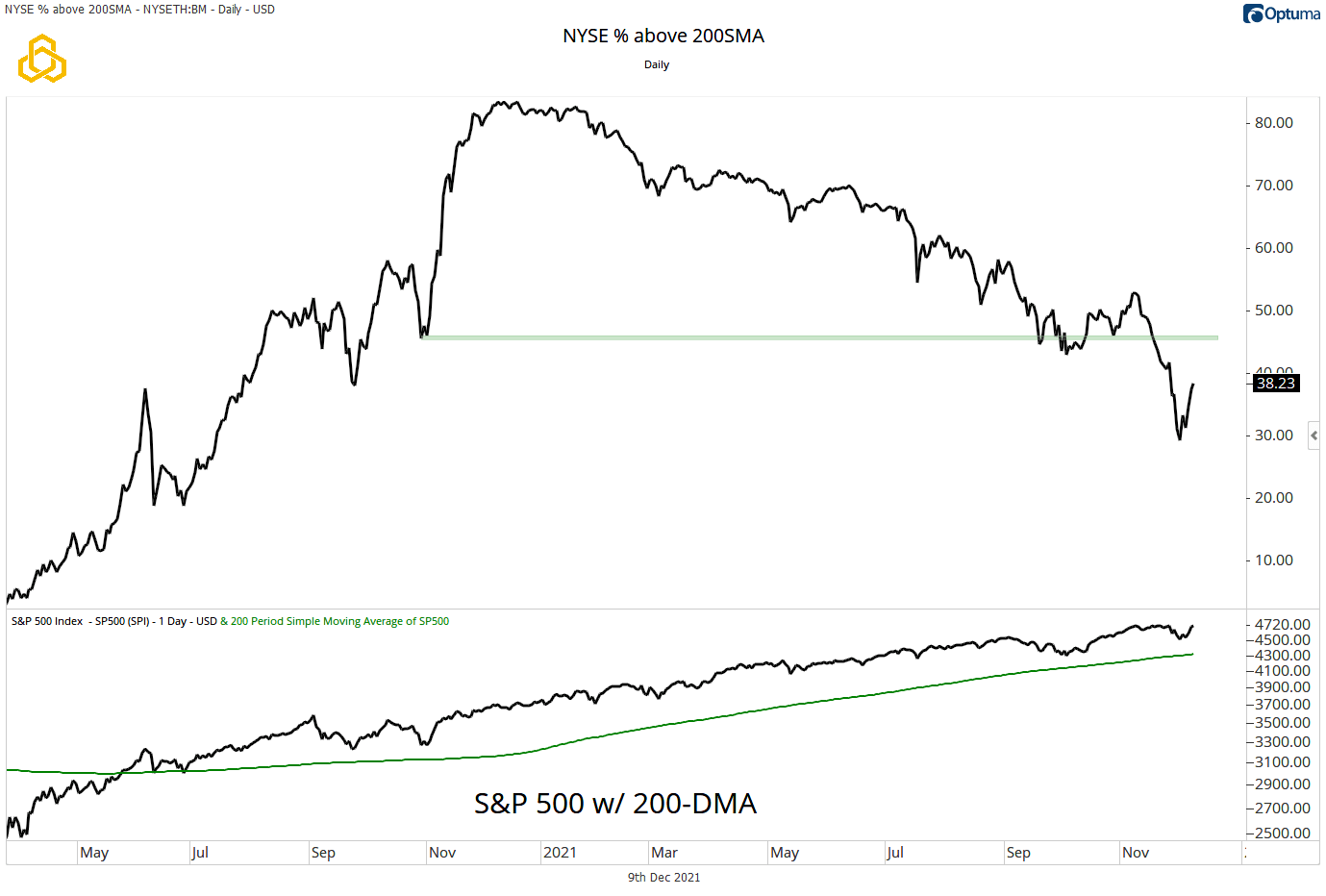
The percentage of NYSE issues trading above their respective 50-day moving averages has rebounded from support to move to 40% from 25% last week. Likewise, the index has rebounded from its 50-day moving average. This is a step in the right direction, but more work needs to be done before we would be comfortable saying that the intermediate-term breadth picture has improved.
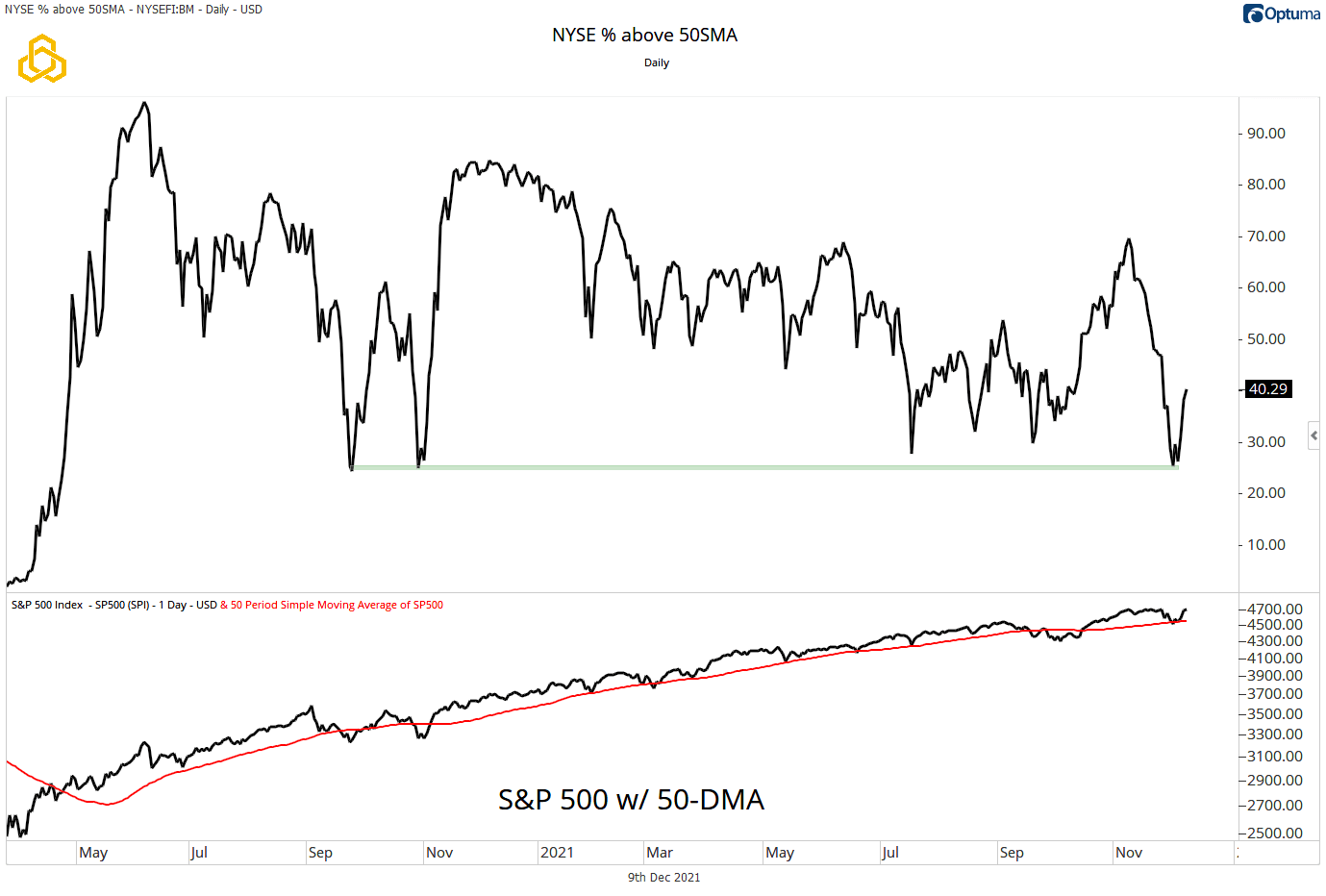
The percentage of stocks trading above their respective 20-day moving averages rose to 42% from 12% last week as the S&P 500 has regained its 20-day moving average. Despite this strong rebound, for now, it simply marks a lower low, which has been the trend for much of 2021.
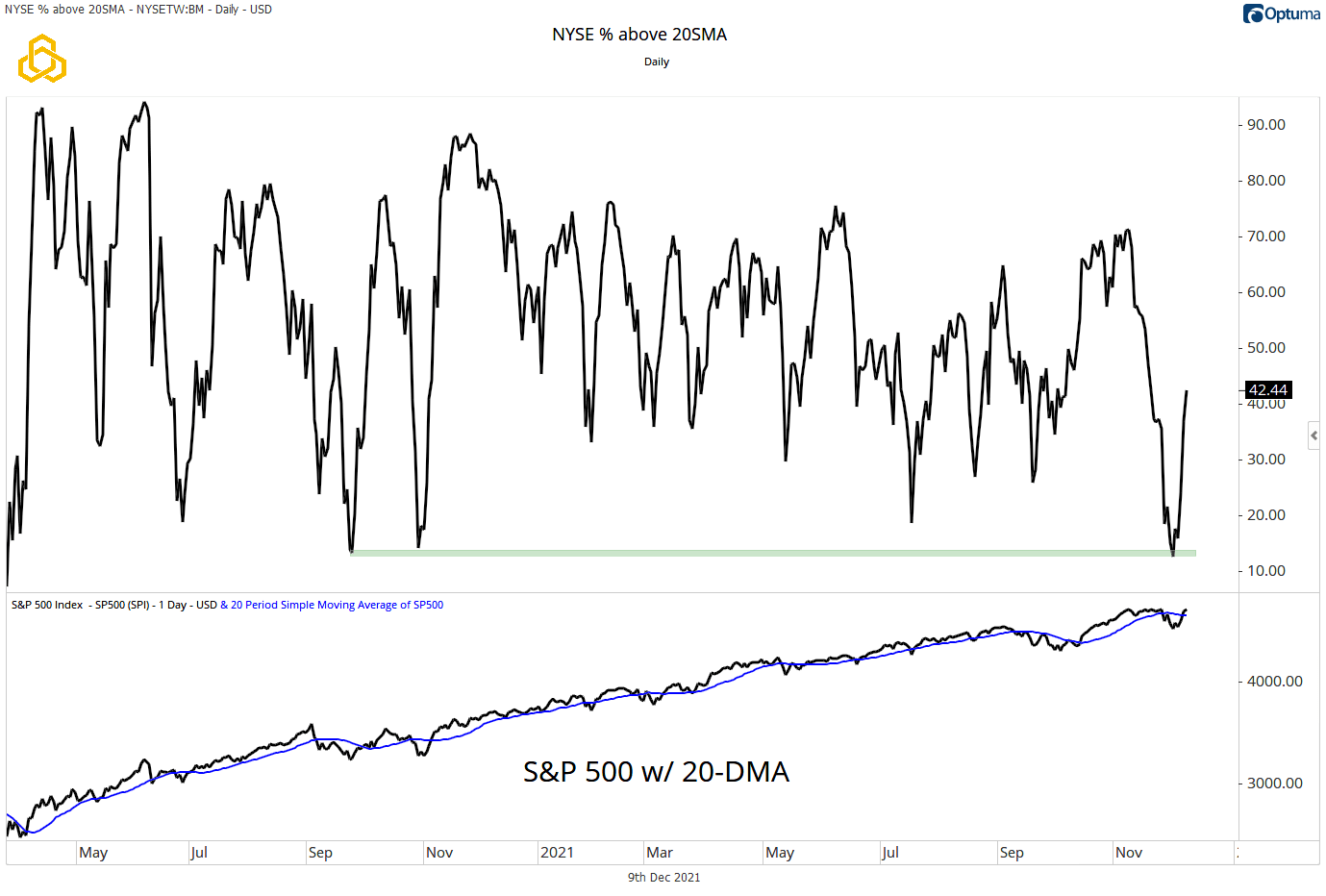
S&P 500 Breadth
Breadth metrics for the S&P 500 improved over the past week, and all three-trend metrics have a healthy majority of stocks in uptrends for their timeframes:
- Advance/Decline Line: Retakes the rising 50-day moving average.
- Percent Above Their 200-Day Moving Average: 68% from 51% last week.
- Percent Above Their 50-Day Moving Average: 62% from 28% last week.
- Percent Above Their 20-Day Moving Average: 62%% from 8% last week.
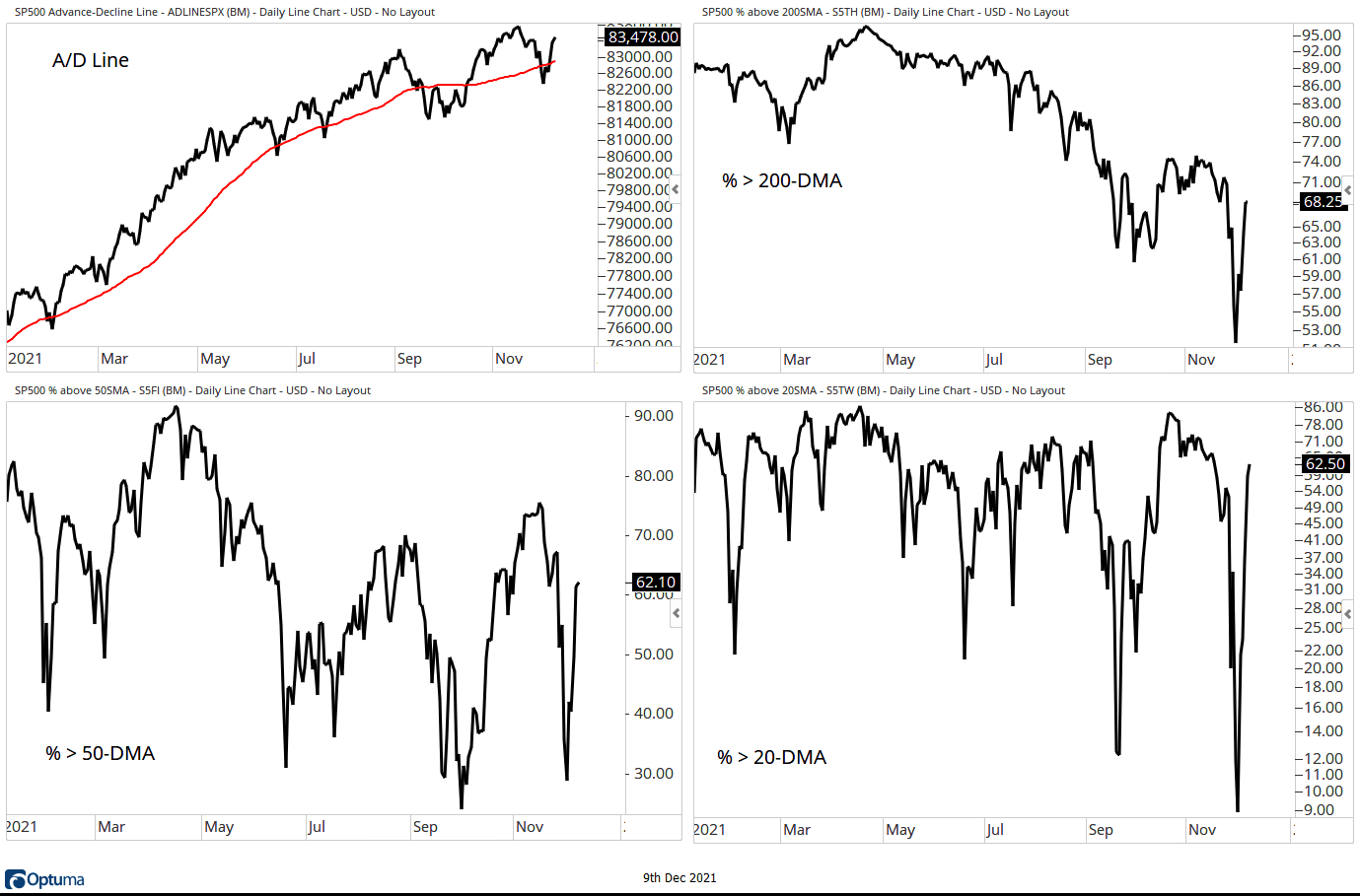
SmallCap Breadth
Breadth metrics for the S&P 600 Small Cap Index has also improved over the past week
- Advance/Decline Line: Below the 50-day moving average.
- Percent Above Their 200-Day Moving Average: 50% from 37% last week.
- Percent Above Their 50-Day Moving Average: 49% from 24% two last week.
- Percent Above Their 20-Day Moving Average: 42% from 5% two last week.
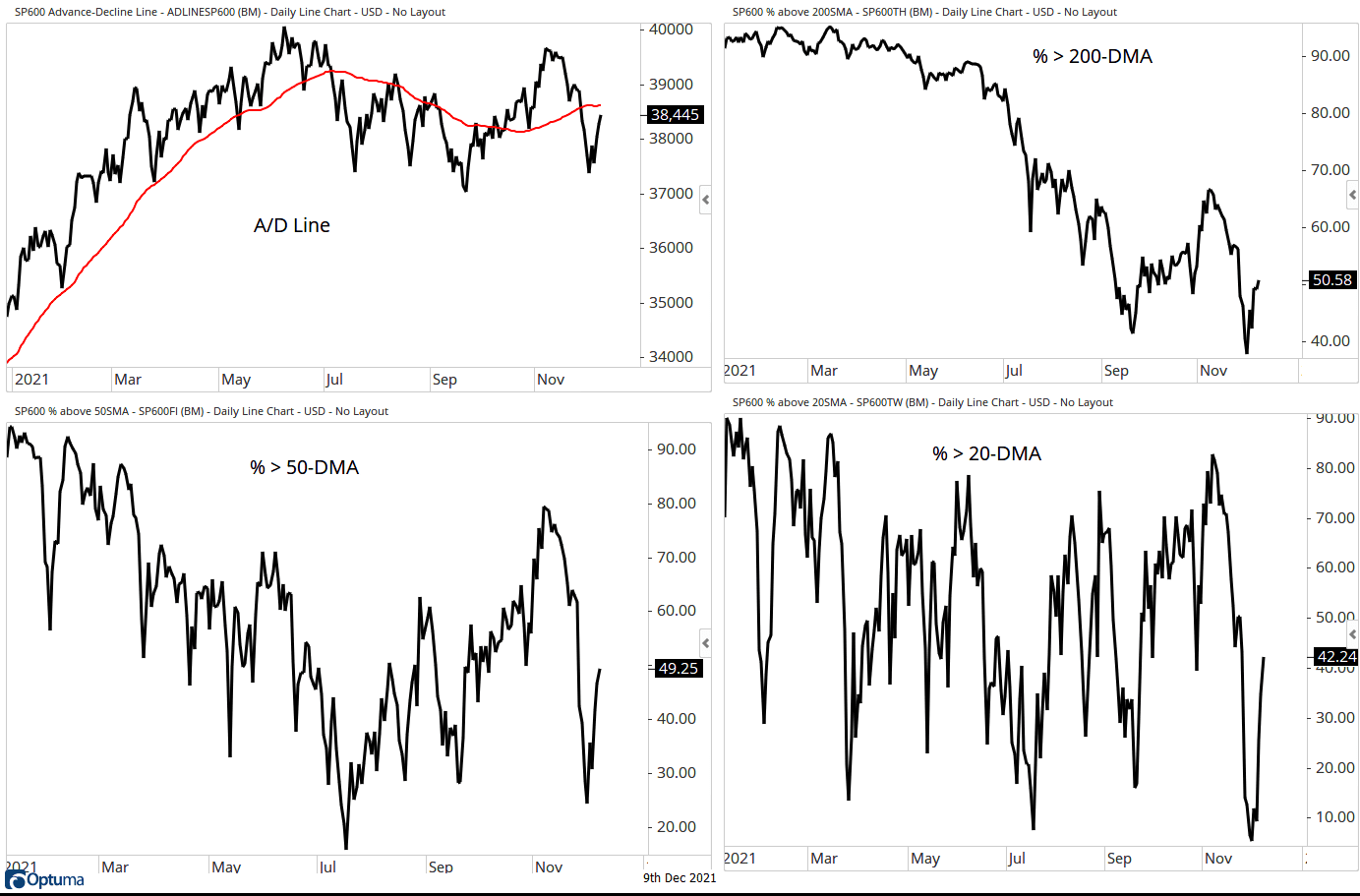
Take-Aways:
Disclosure: This information is prepared for general information only and should not be considered as individual investment advice nor as a solicitation to buy or offer to sell any securities. This material does not constitute any representation as to the suitability or appropriateness of any investment advisory program or security. Please visit our FULL DISCLOSURE page.
